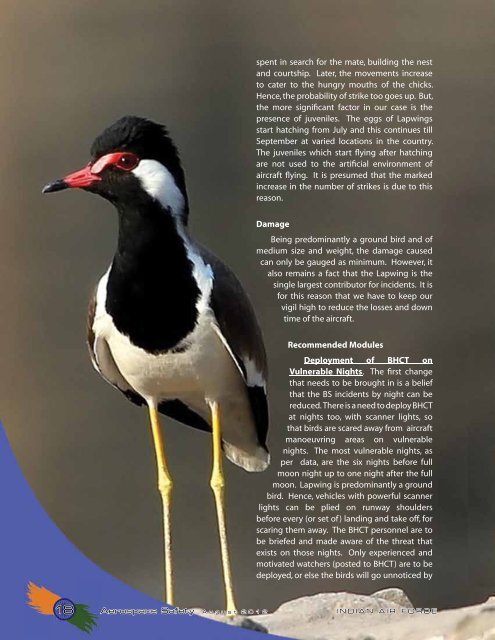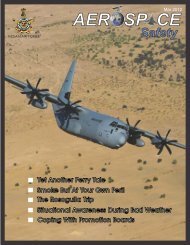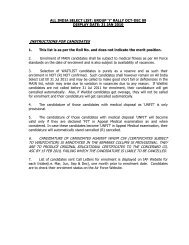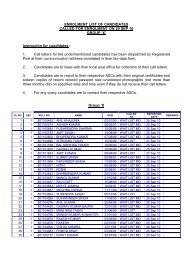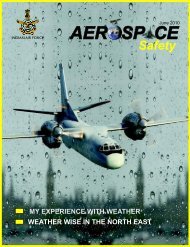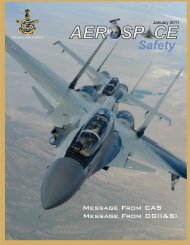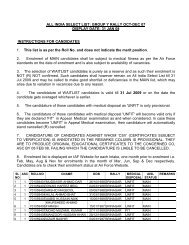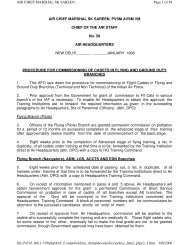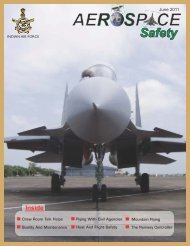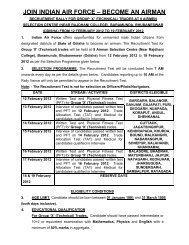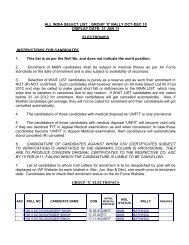You also want an ePaper? Increase the reach of your titles
YUMPU automatically turns print PDFs into web optimized ePapers that Google loves.
18<br />
Aerospace Safety<br />
A u g u s t 2 0 1 2<br />
spent in search for the mate, building the nest<br />
and courtship. Later, the movements increase<br />
to cater to the hungry mouths of the chicks.<br />
Hence, the probability of strike too goes up. But,<br />
the more signifi cant factor in our case is the<br />
presence of juveniles. The eggs of Lapwings<br />
start hatching from July and this continues till<br />
September at varied locations in the country.<br />
The juveniles which start fl ying after hatching<br />
are not used to the artifi cial environment of<br />
aircraft fl ying. It is presumed that the marked<br />
increase in the number of strikes is due to this<br />
reason.<br />
Damage<br />
Being predominantly a ground bird and of<br />
medium size and weight, the damage caused<br />
can only be gauged as minimum. However, it<br />
also remains a fact that the Lapwing is the<br />
single largest contributor for incidents. It is<br />
for this reason that we have to keep our<br />
vigil high to reduce the losses and down<br />
time of the aircraft.<br />
Recommended Modules<br />
Deployment of BHCT on<br />
Vulnerable Nights. The fi rst change<br />
that needs to be brought in is a belief<br />
that the BS incidents by night can be<br />
reduced. There is a need to deploy BHCT<br />
at nights too, with scanner lights, so<br />
that birds are scared away from aircraft<br />
manoeuvring areas on vulnerable<br />
nights. The most vulnerable nights, as<br />
per data, are the six nights before full<br />
moon night up to one night after the full<br />
moon. Lapwing is predominantly a ground<br />
bird. Hence, vehicles with powerful scanner<br />
lights can be plied on runway shoulders<br />
before every (or set of ) landing and take off, for<br />
scaring them away. The BHCT personnel are to<br />
be briefed and made aware of the threat that<br />
exists on those nights. Only experienced and<br />
motivated watchers (posted to BHCT) are to be<br />
deployed, or else the birds will go unnoticed by<br />
INDIAN AIR FORCE


